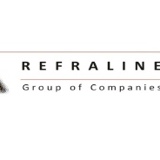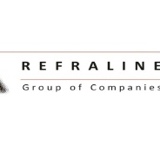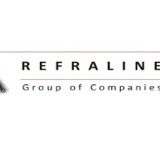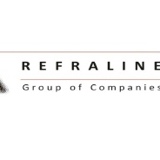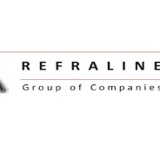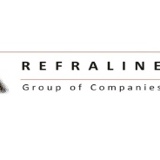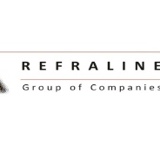Information
-
Audit Title
-
Client / Site
-
Conducted on
-
Prepared by
-
Location
-
Personnel
Scope of Audit
-
Scope
Opening meeting
-
List attendees and their roles.
-
Signatures:
-
Complete attendance register
-
Objectives of the audit. -Not to reject the system -re-currence may point to system failure - cant cover all aspects. -where no non-conformance detected does not mean non exist sample of activities.
-
Review of audit programme:
-
Company representative
-
Names:
-
Function of company representative:
-
Time of closing meeting:
-
Confidentiality
-
Reasons for aborting audit:
-
Invite questions
-
Comments:
Overview of organisation
-
Comments
Results of previous audits:
-
Comments:
4.1 OHS management system
-
Does the company /site have a OSH management system?
-
Comments:
4.2 OHS Policy
-
Does the Company have a written OHS Policy? <br>
-
Is the OHS Policy signed and communicated to all employees? <br>
-
Is the Policy available to all employees/interested parties? <br>
-
Is the policy and objectives relevant to the organisation's business? <br>
-
Demonstrate ongoing commitment in line with the SHE risk profile <br>
-
SHE performance forms part of the appraisal <br>
-
Comments
4.3 Planning
4.3.1 Planning for HIRA and risk Control
-
Is a procedure in place for HIRA? <br>
-
Systematic approach to identify and assess risks and impacts<br>
-
Risk/impact assessment methodology and criteria defined <br>
-
Cross section of employees involved in risk/impact assessment process <br>
-
Company standard set regarding risk/impact assessment review <br>
-
Assessment to include all activities
-
Assessment includes activities carried out by contractors and off site/installations <br> <br>
-
Assessments cover the full scope of the company responsibility and accountability<br>
-
Appropriate risk and impact assessment carried out before all changes and/or modifications carry over risks identified and assessed <br><br> <br>
-
Assessment take account of both internal and external changes and/or modifications carry <br>
-
Take into consideration normal and conditions as well as potential incidents and emergencies throughout the product and/or process life cycle <br> <br><br> <br>
-
SHE risk surveys <br>
-
Comments
4.3.2 Legal and other requirements
-
Legal requirements identified <br>
-
System established to provide access to relevant current legislation <br>
-
Employees aware of consequences of non compliance<br>
-
Legal non compiance recorded and rectified accordingly<br>
-
Comments
4.3.3 SHE objectives and targets
-
Corporate/site specific objectives and target established<br>
-
Objectives commensurate with risks and impacts identified <br>
-
Objectives documented at appropriate levels at the plant/facility<br>
-
Objectives and targets specific and measurable<br>
-
Objectives and targets updated at appropriate levels<br>
-
Interested and affected parties afforded the opportunity to comment on objectives and targets<br>
-
Comments
SHE Plan
-
Plan established that indicates how objectives and targets are going to be achieved <br>
-
Adequate resources available to implement the plan <br>
-
Plan developed to operational level <br>
-
System established to track achievement of objectives and targets <br>
-
Employees informed of progress <br>
-
Comments
4.4 Implementation and operation
4.4.1 Resources, roles,responsibilities, accountability and authority
-
Legal appointments in place <br>
-
Scope and duties defined<br>
-
Non statutory in place<br>
-
Scope and duties defined<br>
-
Comments
4.4.2 Competence Training and awareness
Needs and analysis
-
Training needs analysis based on training matrix documented and includes: <br> SHE induction training<br> SHE awareness training <br> SHE system requirements <br> Task related SHE training <br><br> <br>
-
Training schedule documented and adhered to (SHE related) <br> <br>
-
Training procedure takes into account differing levels of responsibility, ability, literacy and risk<br>
-
Employees trained in all SHE standards, procedures and work instructions related to their responsibilities before commencement of new duties<br> <br>
-
Competency assessment part of training program <br>
-
Employees trained in the handling of hazardous waste and spill management procedures <br>
-
Competence of trainers and training material comply with legal requirements<br>
-
Comments
SHE induction
-
Induction to include employees, contractors and visitors (cognisance taken of language) <br>
-
Site specific induction carried out for all new and transferred employees as well for contractors <br>
-
Risk of computer/process control overriding physical lock out, assessed and control <br>
-
Comments
Site specific/task training
-
Supervisors trained to give on the job training (including SHE aspects) <br>
-
All employees are aware of the hazards and risks and can explain the effects of exposures related to their jobs/tasks <br><br> <br>
-
Safe work procedures available for training purposes<br>
-
System in place to monitor suitability and effectiveness of training program <br>
-
System established to track training outcomes per employee <br>
-
Legal appointee training <br>
-
Legal appointees trained with respect to their SHE duties and responsibilities<br>
-
Comments
4.4.3 Consultation, Participation and communication
-
All legal SHE related reports completed and submitted
-
Hazards and risks communicated before high risk tasks are performed
-
SHE performance information available to interested and affective parties
-
Comments:
4.4.4 Document control and record keeping:
Documentation
-
Up to date copies of corporate standards are available <br>
-
Site specific standards take cognisance of corporate standards<br>
-
Comments:
4.4.5 Control of documents
-
Procedure in place for controlling all documents and data required by the SHE management system <br>
-
System periodically reviewed <br>
-
Current versions of relevant documents and data are available<br>
-
Obsolete documents and data are promptly removed from all points of issue<br>
-
Archived documents and data retained for legal or knowledge preservation purposes or both, are suitable<br>
-
Did the organization ensure that the documents of external origin is determined and identified?
-
Comments:
4.4.6 Operational control
4.4.6 Lifting Equipment
-
Records available of maintenance, testing and inspection.
-
Unsafe or damaged lifting equipment, including ropes, slings, chains, hooks is not in use and removed.
-
Lifting equipment labeled, meet the required legal requirement, SWL displayed
-
Operators of moving machinery is licensed .
-
SWL of plant or any lifting equipment is not exceeded
-
Comments:
4.4.6 Hazardous Chemical (including fuel and oil)
-
Safe storage location (e.g. flammable not near ignition sources, spills can not enter stormwater drains, etc)
-
Adequate spill containment equipment
-
Safety Data Sheets accessible on site
-
availability of emergency procedures for injury/spills/fire etc.
-
Sufficient ventilation.
-
Sufficient, and correct PPE.
-
Suitable storage containers. (unlabeled or stored in food containers)
-
Comments:
4.4.6 Personal Protective Equipment (PPE)
-
PPE available on site.
-
System to issue, inspect, replace and monitor PPE.
-
training in safe use, clean-up and inspection of PPE.
-
Comments:
4.4.6 Electrical Hazards
-
No Electrical leads that may be damaged from contact with moving machinery parts.
-
Electrical leads on work surfaces is safe.
-
Electrical equipment protected from flammables.
-
Safe electrical leads. (damaged, out of test date or untested)
-
Comments:
4.4.6 Preventative maintenance
-
Adequate maintenance systems to ensure effective operation of plant and equipment<br>
-
Plant requiring maintenance based upon critically and reliability identified<br>
-
Frequency of maintenance established <br>
-
System in place for the maintenance of floors, building and structure <br>
-
Maintenance application monitored <br>
-
Integrity of bund walls monitored <br>
-
Comments
4.4.6 Premises and workplace
-
Appropriate access provided for disabled people where applicable <br>
-
All redundant equipment stored/removed <br>
-
All shelves, cupboards and containers tidy <br>
-
Walkways unobstructed. No material protrudes beyond demarcation <br>
-
System in place for safe stacking and storage practices<br>
-
Maximum stacking height displayed in applicable areas and adhered to <br>
-
Comments
4.4.6 Facilities hygiene management
-
Proof of services rendered obtained from pest control and cleaning contractors <br>
-
Health risks pertaining to food processing assessed<br>
-
Personal hygiene program established <br>
-
Sufficient facilities provided in relation to employees <br>
-
Comments
4.4.6 Pollution control
-
Potential sources of pollution identified <br>
-
Procedure for spill-controll/cleanup of oils, solvents and other spills <br>
-
Equipment specified in the spill control procedure is available<br>
-
Remediation of polluted areas <br>
-
Comments
4.4.6 Waste management
-
Suitable containers provided, for the various classess of waste generated <br>
-
Schedule for the removal of waste <br>
-
Waste inventory established <br>
-
Storage and diposal of hazardous waste <br>
-
Demarcation of waste bin locations
-
Waste streams classified and provision made for the separation of waste <br>
-
Comments
4.4.6 Hazardous waste
-
Comprehensive inventory of all hazardous waste generated on site<br>
-
Procedure for the disposal of hazardous waste including contaminated protective equipment <br>
-
Copy of the agreement/contract with the hazardous waste collection agent <br>
-
Hazardous waste diposal site audited <br>
-
Comments
4.4.6 Isolation of energy sources (lock out)
-
All energy sources identified <br>
-
Procedure in place to cover isolation of all energy sources <br>
-
Procedure to include test for zero potential <br>
-
All locks, keys and other devices identified and controlled <br>
-
All prescribed equipment, can be locked out at point of control/operation <br>
-
All main switches accessible (even when circuits are locked out) <br>
-
Provision in the procedure for the removal of a lock out in the absence of the person who applied it <br>
-
Comments
4.4.6 Guarding
-
All areas where guarding is required identified <br>
-
Hazardous moving machine parts and all energy sources identified <br>
-
Guarding provided where required <br>
-
Guarding effective and adequate <br>
-
Guards designed for easy removal and replacement <br>
-
Guards included in maintenance schedule <br>
-
Critical valves locked in the open or shut position as required <br>
-
Comments
4.4.6 Management of portable gas cylinders, cutting and welding equipment
-
All portable gas cylinders identified and recorded <br>
-
Procedure for the handling, storage and use of gas cylinders <br>
-
Comments:
4.4.6 Storage:
-
Flammable/toxic inert identified <br>
-
Well ventilated area <br>
-
Nested/secured <br>
-
Stored upright <br>
-
Signage <br>
-
Empty and full cylinders separated <br>
-
Faulty cylinders clearly marked <br>
-
MSDS readily available <br>
-
Comments
4.4.6 Transportation:
-
System in place for the safe transportation of gas cylinders <br>
-
Comments:
4.4.6 Cutting and welding equipment:
-
Cutting and welding equipment identified and recorded <br>
-
System in place for maintenance of equipment <br>
-
Flashback arrestors fitted <br>
-
Comments
4.4.6 Portable electrical equipment:
-
All portable electrical equipment identified and recorded <br>
-
System in place for the inspection and maintenance of all portable electrical equipment <br>
-
Inspection frequency based on risk <br>
-
Comments
4.4.6 General electrical installations
-
Report on the safety of the electrical installation is generated after inspection<br>
-
Building earthing and polarity tests carried out by a competent person and results recorded <br>
-
Electrical installation in hazardous locations must be classified in terms of the classification of hazardous locations of hazardous locations and selection of apparatus for use in such locations
-
All intrinsically safe/flameproof electrical equipment identified and recorded <br>
-
Inspections of intrinsically safe/flameproof electrical equipment conducted in accordance with the requirements of the applicable legislation and recorded in a register<br> <br>
-
Certificates of compliance available <br>
-
Comments
4.4.6 Hand tools
-
Hand tools policy in place <br>
-
Standard in place for makeshift or home made tools on company premises <br>
-
Storage of tools-all tools stored correctly (stores and tool boxes) without <br>
-
Creating hazards from sharp projections etc. <br>
-
Comments
4.4.6 Personal protection equipment
-
Company policy for PPE <br>
-
All employees trained on the correct use, disposal, storage, maintenance and replacement procedure for PPE <br>
-
Formal PPE survey conducted <br>
-
System to ensure the condition of PPE, is checked on a regular basis . <br>
-
MSDS information used to identify specific PPE requirements for handlers of HC <br>
-
SHE role players involved in the selection of PPE <br>
-
Comments
4.4.6 Respiratory Equipment
-
Standard operating procedure for all users of respiratory equipment <br>
-
All designated users of breathing apparatus receive regular refresher training in the use thereof <br>
-
Procedure for respirator and filter cartridge specifications including the recommended storage, maintenance and replacement frequencies effectively implemented <br><br> <br>
-
All respirators individually numbered and inspected on a regular basis <br>
-
Comments
4.4.6 Fall Protection
-
A study to determine where and when fall protection is required <br>
-
Employees trained in the correct use of various types of fall protection <br>
-
Equipment inspected by a competent, appointed person and record kept <br>
-
Comments
4.4.6 Self propelled mobile equipment
-
system (fleet management system) for control of motorised equipment that includes formal procedure for driver training, daily inspection of equipment, recording and reporting of defects <br><br><br>
-
Drivers/operators appointed <br>
-
Drivers have valid licences free of endorsements <br>
-
Check lists identify crtical safety items (equipment specific) <br>
-
Check lists identify crtical safety items (equipment specific) <br>
-
Procedure for the transport of hazardous goods effectively implemented<br>
-
Transportation" routing competency of the driver/operator (operational issues) <br>
-
Traffic safety' awareness program <br>
-
Comments
4.4.6 Management of dangerous goods
-
The full scope of accountability associated with hazardous chemicals considred and related SHE risks managed <br>
-
HCS identified in accordance with legislative requirements <br>
-
Procedure to include: Storage , Issuing, Training, Handling, Transport <br><br> <br> <br><br><br> <br> <br>
-
Inventory of substances available and up to date <br>
-
MSDS available in the user departments, at the clinic and in storage areas <br>
-
Relevant permit requirements identified and in place <br>
-
Comments
4.4.6 First aid equipment
-
First aid requirements identified <br>
-
First aid boxes provided for all workplaces and stocked according to statutory requirements and associated risk
-
Procedure in place for: Training of first aiders, Replenishing of first aid boxes, Control and management of first aid equipment, Training ratio met <br><br><br> <br>
-
Comments
4.4.6 Occupational health support services
-
Baseline and risk based medical examinations for employees and meets all medical surveillance standards <br> <br>
-
Personal confidential medical files available for each employee <br>
-
Confidentially of medical records ensured <br>
-
Person job specification used by occupational health service/supervisor <br>
-
Specification used for placement of employee <br>
-
Specifications updated when tasks, process or health risk standard changes <br>
-
Regular medicals carried out: <br>
-
Exit examinations <br>
-
Monitoring of all hazardous substance handlers and vehicle drivers <br>
-
Job categories for regular medical surveillance or biological monitoring identified and recorded <br>
-
Medicals conducted for the above at scheduled intervals <br>
-
Biological monitoring schedules and records kept <br>
-
Identification and notification of occupational disease or exposure to human resources <br>
-
Remedial action taken where necessary <br>
-
Cerification of fitness to work available <br>
-
Clinic visits linked to medical examinations and biological monitoring <br>
-
Hearing conservation program implemented <br>
-
Comments
4.4.6 Work procedure
-
Procedure regarding the compilation of WSWP <br>
-
WSWP available to all supervisors and employees <br>
-
WSWP identifies the hazards and critical steps <br>
-
WSWP contains the relevant control measures <br>
-
Comments
4.4.6 Signs/colour coding, demarcation and labelling
-
Standard in place for identification and implementation of colour coding requirements <br>
-
Standard in place for identification and implementation of colour coding requirements <br>
-
All relevant signs prominently displayed <br>
-
Areas demarcated and colour coded in accordance with the standard <br>
-
Critical valves and switches identified and labeled <br>
-
Direction of flow and open/shut operation indicated <br>
-
On planned maintenance program <br>
-
Process flow diagram available, correct and up to date <br>
-
Employees familiar with position and operation of critical valves and switches <br>
-
Identified noise zone(s) demarcated and appropriate symbolic signs displayed <br>
-
Comments
4.4.6 Storage of dangerous goods including explosives
-
Design and construction: <br> Compatibility of chemicals assessed during normal and abnormal circumstances <br>
-
Hazardous material store complies with standards <br>
-
Ventilation systems, drainage etc regularly checked for efficiency <br>
-
Hazardous substances storeroom equipped with adequate ventilation/shelving/ <br>
-
security and fire control systems <br>
-
Appropriate permits/cerificates obtained and displayed <br>
-
Storage for and disposal of unused/old HCS provided <br>
-
Store neat tidy and clean <br>
-
All items labelled and neatly stored <br>
-
All containers kept closed/sealed <br>
-
Store free of combustible materials <br>
-
Maximum storage capacity displayed <br>
-
Bonding used when decanting <br>
-
Bonding and grounding cables, clamps etc in a good condition <br>
-
Containers and packaging <br>
-
Substances/products stored in appropriate, labelled containers <br>
-
Empty containers controlled and safely disposed of <br>
-
Number of containers in work place minimised to reduce risk <br>
-
Employees are familiar with labels <br>
-
Damaged containers/packaging dealt with in relation to the risk(Bulk HCS storage) <br>
-
Bunted as per the requirement <br>
-
Drainage valves closed during normal operations <br>
-
Monitoring/testing requirements identified and met <br>
-
Bulk tanks labelled, as per standard <br>
-
Comments
4.4.6 General
-
Formal approval for the flammable store from the relevant local authority <br>
-
Respective municipal by law requirements for storage of HCS materials identified <br>
-
Inventory of HCS substances includes the maximum allowable storage <br>
-
quantities as well as the appropriate PPE to wear when entering the store <br>
-
MSDS available at point of storage <br>
-
Comments
4.4.7 Emergency preparedness and response
4.4.7 Emergency preparedness
-
Emergency procedure establish and implemented
-
Formal risk survey conducted<br>
-
Correct types of equipment provided for each identified risk area <br>
-
Equipment to cater for all identified emergency scenarios
-
Equipment strategically located in relation to the risk <br>
-
Equipment located in easily accessible positions <br>
-
No smoking areas identified, demarcated and adhered to <br>
-
Fire doors provided and maintained<br>
-
Fire resistant construction applied where necessary<br>
-
Fire breaks maintained<br>
-
Bonding applied where required<br>
-
Explosion panels and safety glass installed and maintained where required<br>
-
All emergency exits unobstructed <br>
-
All emergency exits unlocked or approppriate means provided to open in the event of an emergency<br>
-
Operational effectiveness of doors maintained<br>
-
Comments
4.4.7 Community awareness and emergency response
-
A current written facility emergency plan which addresses among other things communications with and the recovery needs of the community after emergency<br><br>
4.4.7 Maintenance of fire protection equipment
-
Formal inspection procedure to ensure that all fire equipment is inspected<br>
-
All fire extinguishing equipment recorded in a register indicating type, capacity and location<br>
-
Fire equipment serviced in accordance with applicable standard <br>
-
Copy of the registration certificate of the fire equipment servicing company <br>
-
Procedure for replacement of fire extinguishers that have to be serviced off site <br>
-
Spare fire extinghuisers available as standby units for extinguishers that have to be serviced off site <br>
-
Sprinkler systems are inspected annually by an approved maintenance company<br>
-
Comments
4.4.7 Emergency alarm system
-
Independent alarm: <br> Sound of alarm is unique <br> Audible in all work areas <br>
-
Alarm system tested on a regular basis and a record of the tests kept <br>
-
Back up alarm<br>
-
Back up alarm independent of main electricity supply <br>
-
Tested at regular scheduled intervals and deviations addressed<br>
-
Interested and effected parties aware of the alarm<br>
-
Staff member, new employees, contractors and visitors are trained/made aware of correct emergency alarm system <br><br> <br>
-
Communication system <br>
-
Other means of communication introduced as required and determined by the risk<br>
-
Comments
4.4.7 Emergency training and awareness exercises
-
Procedure in place covering the training of emergency response personnel and awareness exercises <br>
-
Emergency co-ordinator appointed<br>
-
He/she appropriately trained <br>
-
He/she receives refresher training as required, based on the risk <br>
-
Emergency teams formally appointed for each shift<br>
-
Letters of appointment should specify the duties and responsibilities of the emergency team members <br><br>
-
Emergency team members trained in formal fire prevention techniques and attend refresher courses relative to the risks <br><br> <br>
-
Record of in house fire training sessions kept<br>
-
Names (and photo's if possible) of fire team members are prominently displayed in all work areas and on notice boards
-
MSDS information (of toxic substances) available for emergency service providers e.g. fire department, ambulance, hospitals <br><br>
-
At least one person per department excluding fire team members, trained in the use of fire extinguisher <br>
-
Comments
4.4.7 Emergency Response
-
emergency plans available for site
-
Emergency procedures displayed at site?
-
evidence of training and rehearsal of emergency plans
-
aduaqute first aid kits aid equipment for site?
-
sufficient access to formally trained First Aiders for all shifts?
-
Comments:
4.5 Checking and corrective action
4.5.1 Performance measurement and monitoring
-
Progressive statistical data: <br> Injury/occupational illness/diseases statistics for current and previous 12 months<br>
-
Damage statistics for current and previous 12 months<br>
-
Environmental incidents for current and previous 12 months <br>
-
Non conformance statistics for current and previous 12 months <br>
-
Annual consolidation of progressive year's statistics for comparative purposes <br>
-
Statistics consolidated and available in graphic format <br>
-
Analysis of statistics <br> <br>
-
Statistics categorised and analysed to identify trends <br>
-
Medical trends for non occupational illness/diseases evaluated to identify possible <br>
-
underlying work/hobby health hazard exposure sources <br>
-
At least an annual report to top management on incident statistic analysis (covers identified risks, increasing/decreasing trends) <br>
-
Statistics published and circulated <br>
-
Occupational health variances to form part of statistical data and used for remedial action <br> <br>
-
Statistical tabled for discussions at SHE committee meetings <br>
-
Comments
-
Monitor the SHE performance of employees and the effectiveness of risk control measures <br>
-
Comments
4.5.1 Planned job observation
-
Supervisors in possession of up to date JSA/WSWP's <br>
-
Supervisors trained in the correct method and purpose of task observations <br>
-
Deviation trends analysed and associated system weakness identified and corrected<br>
-
Comments
4.5.1 Performance management
-
System in place to measure management and employee participation <br>
-
System in place to ensure maintenance and calibration of measuring tools and equipment <br>
-
Comments
4.5.3 Incidents investigation,non conformances, corrective action and preventative action
-
Prevent re-occurrence of similar incidents and develop a corporate memory of SHE incidents <br>
-
Comments
4.5.3 Incident/non conformance reporting
-
System in place for reporting of all categories of incidents <br>
-
Comments
4.5.3 Incidents/non conformances
-
Injury, diseases, environmental incidents, Property damages <br>
-
Comments
4.5.3 Vechicle accidents
-
Preventable, Non preventable, Vehicle damage <br>
-
Comments
4.5.3.1 Incident investigation
-
Investigation conducted accordingly to standard <br>
-
Appropriate investigation <br>
-
All incidents requiring investigation are investigated <br>
-
Investigations done by designated person <br>
-
Investigation team members are appointed in writing and trained <br>
-
Appropriate SHE and other expertise co-opted on investigation team <br>
-
SHE department included in the investigation <br>
-
Investigators competent in principles and techniques of investigation <br>
-
Scope of investigation commensurate with both event and risk <br>
-
Causes identified <br>
-
Immediate (direct) causes identified <br>
-
Basic (indirect) cause identified <br>
-
Comments
4.5.3.2 Non conformity, Corrective action and preventative action
-
Did the organization establish, implement and maintain a corrective and preventative procedure?
-
Did the organization identify and corrected non conformities effectively and address recommendations? <br>
-
Investigation procedures to include recommendations to reduce risk <br>
-
Did the organization record and communicate the results of the corrective and preventative actions? <br>
-
Did the organization do a formal follow up / review after action to determine if effective? <br>
-
Did the organization ensure that any necessary changes arising from corrective and preventative action are made to the OSH management system?
-
Appointees conduct regular inspections of their areas responsibility, based on the risk profile <br>
-
Comments
4.5.4 Control of records
-
Did the organization establish and maintain records as necessary to demonstrate conformity to the OSH management system requirements? <br>
-
Documented procedure for control of records established?<br>
-
Is all records legible, identifiable and traceable?<br>
-
Comments
4.5.5 Internal Audits
-
Team composition <br>
-
Documented procedure for auditors <br>
-
Do the organization conduct internal audits at planned intervals ? <br>
-
Top management represented <br>
-
Departmental managers/supervisors <br>
-
Area SHE representatives and or employee representatives part of the audit<br><br>
-
Deviation report compiled after the audit <br>
-
Action plan and follow up recorded<br>
-
Comments
4.6 Management Review:
-
Systematic approach to identify and assess risks and impacts
-
Procedure in place for review of the SHE management system
-
Full SHE system reviewed
-
Review documented
-
Recommendations to system changes actioned
-
Comments
Closing meeting
-
Attendance register
-
Signatures:
-
Audit only sample, where no non conformance reported, does not mean on exist.
-
Summarise good practices if any.
-
Comments:
-
Copy of feedback report.
-
Invite questions
-
Comments:
Summary of audit report:
-
Summary of total score:
-
Scoring: high / low :
-
List non-conformances:
-
List points / areas / clauses for improvement/s:
-
List observations:
Corrective Actions
-
Purposed corrective action dates:
Sign Off
-
Auditor's signature
-
Auditee signature
-
Lead Auditor signatures:
-
Date:







